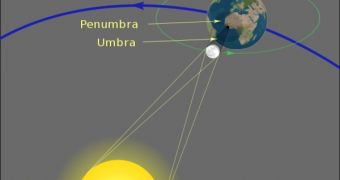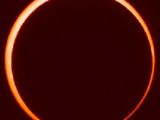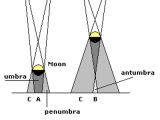This year's annular or ring eclipse of the sun will be visible from most of the southern hemisphere, but it will not be a complete solar eclipse. That is to say, the Moon will not completely cover up the Sun, but, rather, will create a "penny atop a nickel" effect, leaving the outer edges of the star visible. On Monday, January 26th, the Moon will be further away from Earth as usual, which is the main reason why its shadow cone will not touch our planet. This only happens when a total eclipse occurs, and the areas from which it's visible are usually very restricted, limited to a corridor tens of miles in width.
Only in selected locations will the Moon appear as being superimposed on the Sun. In most areas that will see the annular eclipse, people will only be able to witness our natural satellite taking a smaller or larger chunk of the Sun out of the picture. An effect known as “counterfeit twilight” ensues, which is similar to that time when day becomes night. But, in reality, the intensity of the eclipse won't even resemble that of a partial occultation.
The Moon will cover the light of the Sun for roughly 8 minutes, after which it will start moving away from it. Over the past few years, this moment could only be observed from open waters, as the shadow cone was visible over the Atlantic Ocean, and then moved over the Indian Ocean, where its intensity peaked and then faded away.
This year will be no different, astronomers say, as the lunar faint outer shadow or penumbra will “touch down” in the South Atlantic Ocean, some 500 miles (800 kilometers) off the South African coast, and will completely miss the land.
From the southernmost parts of Africa, the Sun will appear as covered on 75 percent of its surface, but the “ring of fire” will only be seen from the middle of the Indian Ocean. The eclipse will be mostly visible from areas in Africa (its southern third), southeastern India and China, as well as Australia. Residents of these areas will witness the Sun being covered to some extent, but, other than fishermen who could happen to be in the right place at the right time, no one is bound to view the full effect.

 14 DAY TRIAL //
14 DAY TRIAL // 

